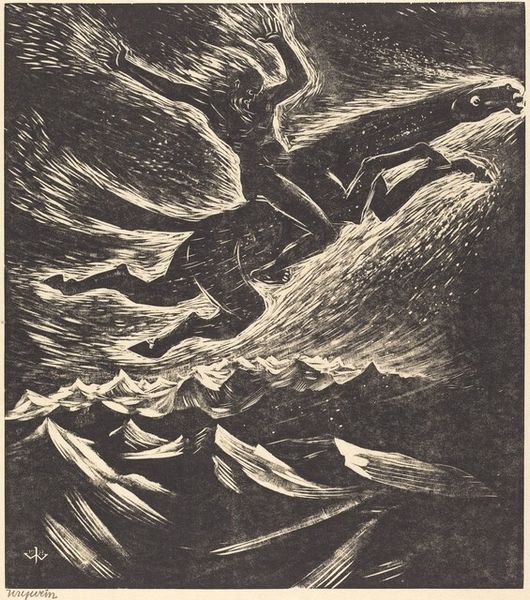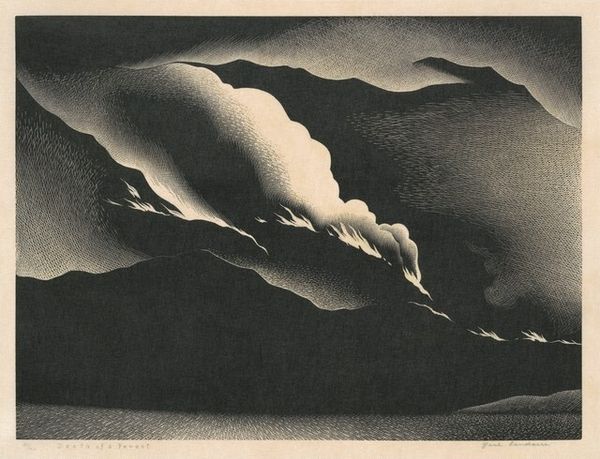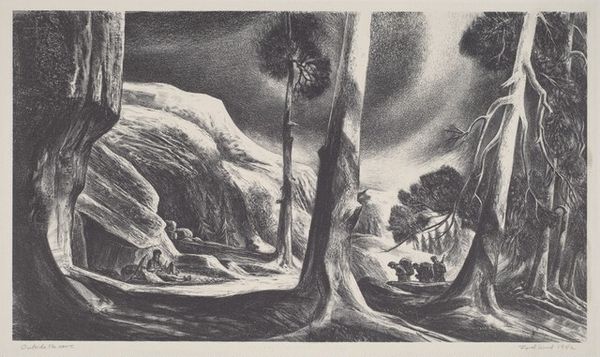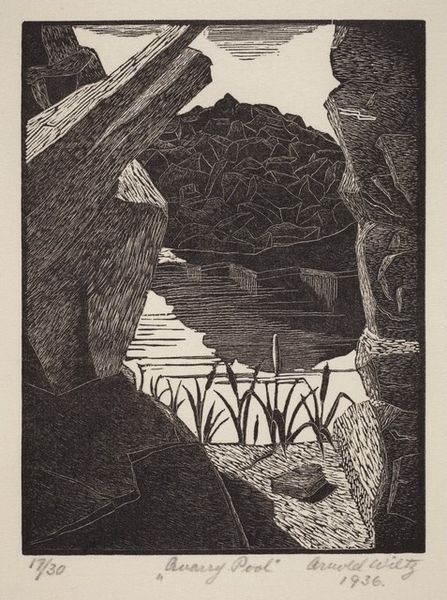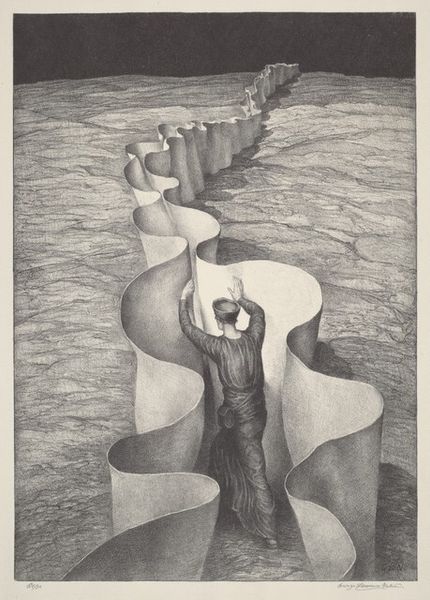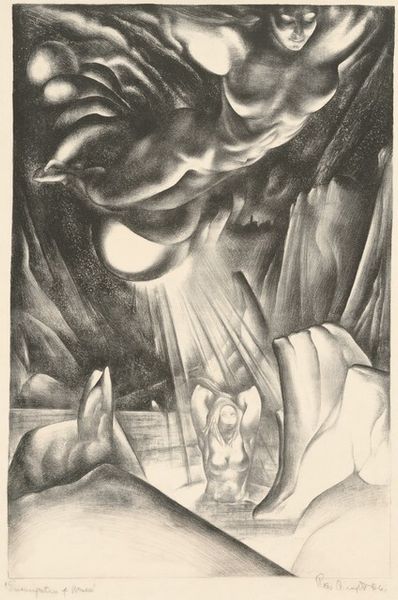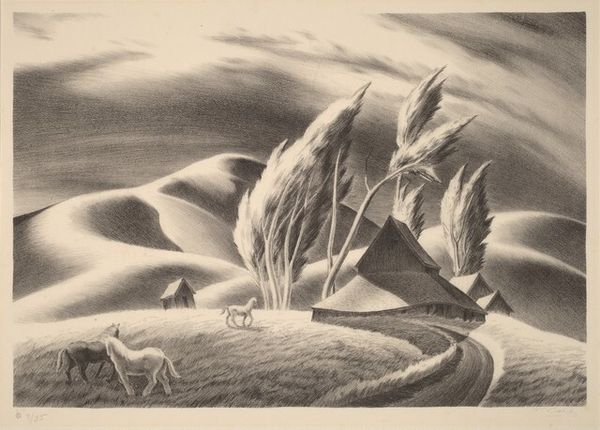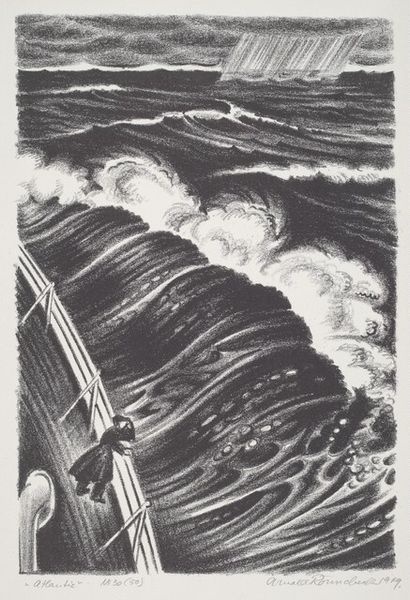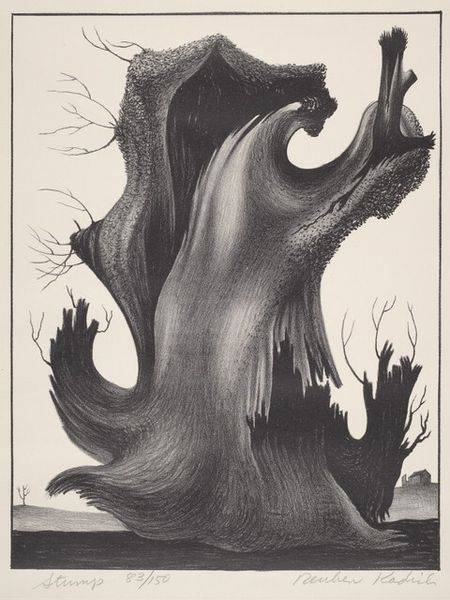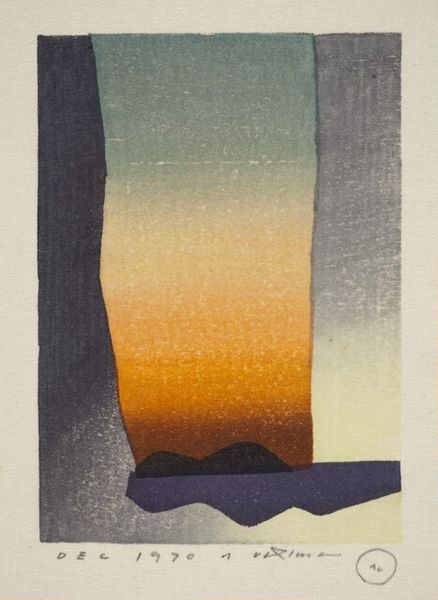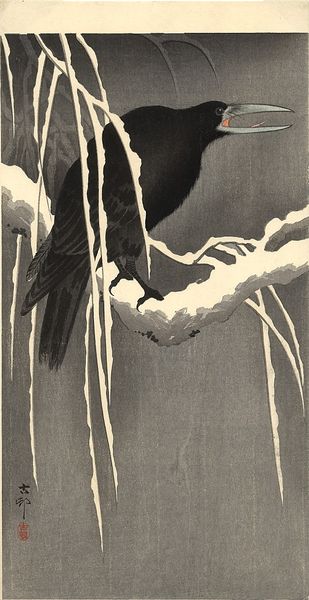
drawing, print, charcoal
#
drawing
# print
#
landscape
#
charcoal drawing
#
surrealism
#
line
#
charcoal
Dimensions: image: 240 x 208 mm sheet: 405 x 300 mm
Copyright: National Gallery of Art: CC0 1.0
Curator: Let’s discuss Bernard Joseph Steffen’s print, "S-Curve," created in 1940. What’s your initial impression? Editor: There's a stillness to it. The twisting road pulls you in, but something about the light feels almost... ominous. Like a stage set for something unsettling. Curator: The period is significant, isn't it? 1940. On the cusp of enormous social upheaval. Knowing that, does it shift how we read the "S-Curve," with its stark contrasts? It looks, I might say, desolate. Editor: Absolutely. You can consider the role of Regionalism in American art during this period and how artists grappled with depicting the heartland. Is Steffen responding to that, or even reacting against it, showing something a bit more isolating? It’s a cultural mirror reflecting anxiety. The formal element of stark composition works here. Curator: And then we look at that lone tree stump. It has a strong sculptural quality. Deforestation as a metaphor perhaps? Or maybe a ruin for a time to come? Editor: Both feel accurate and it's intriguing to wonder how its reception shifted across time periods. Seeing that road now, one wonders if it carries echoes of the Dust Bowl migrations. It seems like a document. But whose history? The rich soil it runs over. Curator: A document filtered through the lens of surrealism, don't you think? It’s more psychological space than a physical one, I suspect. And his use of charcoal really brings the drawing to life, each stroke seems considered, weighted. Editor: Right. And thinking of Steffen’s work finding its place in the cultural narrative, what responsibility do institutions have in promoting or reshaping such interpretations, especially in today’s social climate? It requires careful curation to facilitate meaningful conversations. Curator: I completely agree. It invites us to consider both the immediate context of its creation and its relevance to our current landscape. Thank you for providing some insight into your reaction to the work. Editor: Thanks. And I really wonder if these sorts of images should compel further analysis in social economics and land ownership in our world today. It would really contextualize Steffen's original work.
Comments
No comments
Be the first to comment and join the conversation on the ultimate creative platform.
